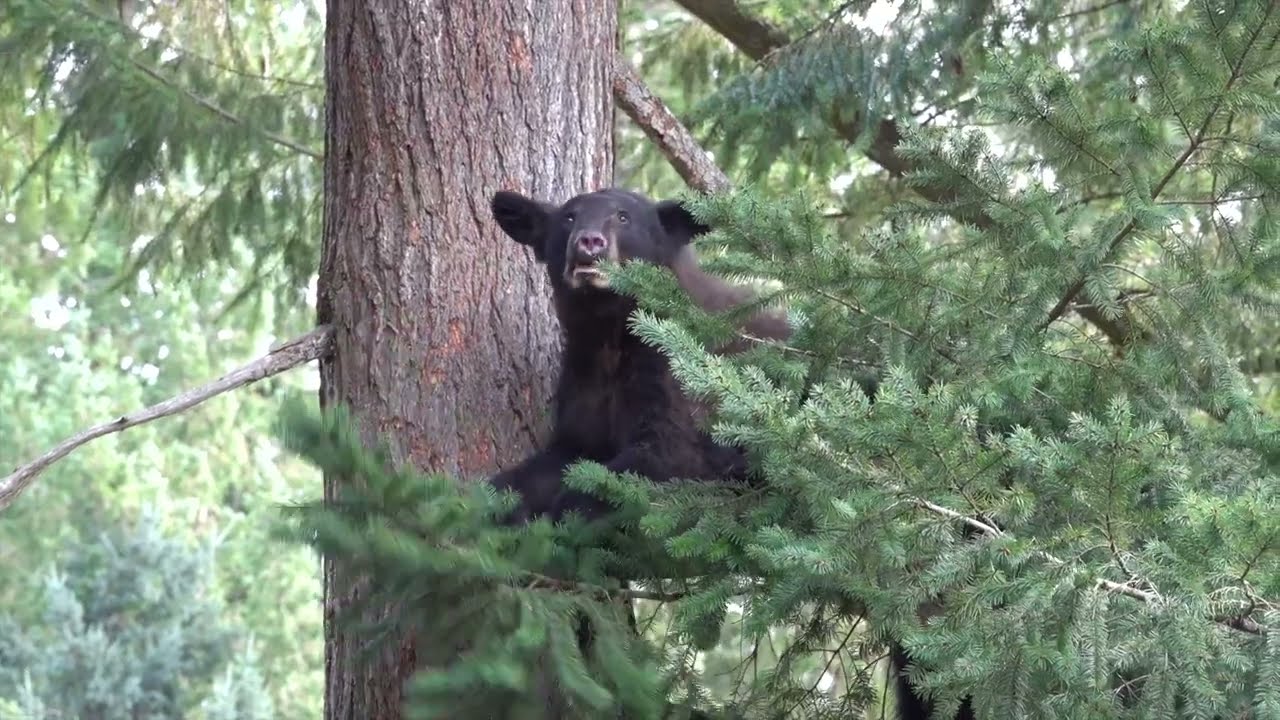– Insights into the behavior and development of black bear cubs in the wild
– The significance of tree climbing skills for young black bears’ survival and health
– Challenges facing rescued black bear cubs and rehabilitation efforts
– The role of wildlife conservation efforts in protecting black bear populations
– Strategies for human-wildlife coexistence to safeguard black bears
The recent video of rescued black bear cubs climbing a very tall tree has sparked considerable interest in these fascinating creatures’ developmental and survival strategies. This event provides an instructive look into the lives of black bears, especially during their formative years, highlighting the importance of certain skills and behaviors for their well-being and preservation. In this article, we dissect the layers of meaning behind such an occurrence, discussing the innate behaviors of black bear cubs, the critical role of wildlife conservation efforts, and practical strategies for promoting coexistence between humans and black bears.
Black bear cubs are born in the safety of their den during winter, relying completely on their mother for warmth and nutrition. As they grow, their natural curiosity and playfulness lead them to explore their surroundings, an essential process for their development. Climbing trees is vital for black bear cubs, serving multiple purposes. It allows them to escape predators, provides a safe resting place, and is instrumental in their muscular development. Observing rescued black bear cubs efficiently climbing tall trees showcases their instinct and agility, an encouraging sign of their ability to adapt and survive in the wild.
However, these skills come sharply into focus when considering the precarious situation of rescued cubs. These young bears may have lost their mothers or encountered dangers in their natural habitats. Wildlife rehabilitation centers provide these cubs a temporary refuge to grow stronger and learn essential survival skills like tree climbing. These efforts aim to prepare the cubs for a successful return to the wild, where they can contribute to their population’s genetic diversity and resilience.
Wildlife conservation efforts are vital for the rescue and rehabilitation of individual animals and for ensuring the health and sustainability of black bear populations. As habitat destruction, human encroachment, and climate change threaten these majestic creatures, conservationists work tirelessly to protect their habitats, mitigate human-bear conflicts, and educate the public about the importance of black bears in the ecosystem. Preserving large tracts of forested land and securing wildlife corridors are essential strategies that enable bears to roam freely and safely.
The interaction between humans and bears often poses significant challenges, particularly in areas where their habitats overlap. Effective strategies for promoting human-wildlife coexistence are imperative to reduce conflicts and protect both parties. Implementing bear-proof garbage disposal systems, using bear-resistant food storage methods in campgrounds, and educating communities about bear behavior can significantly diminish the chances of dangerous encounters. These measures foster a respectful and harmonious relationship between humans and black bears, ensuring the survival of these important animals.
In conclusion, the video of rescued black bear cubs climbing a very tall tree beautifully illustrates these animals’ resilience, adaptability, and beauty. It also serves as a compelling reminder of the importance of preserving their natural habitats, understanding their behavior, and implementing effective conservation and coexistence strategies. Through concerted efforts, it is possible to ensure a bright future for black bears, allowing them to thrive in the wild for generations.
*****
Source Description
Timber and Thorn, the Oregon Zoo‘s two playful black bear cubs, are reaching new heights this week — literally. As the weather warms up, the duo has been scaling the 50-foot-high Douglas Fir trees in their habitat to feast on the tasty new growth near the top.
“It’s pretty amazing to see them climb so high,” said Jen Osburn Eliot, who oversees the zoo’s Great Northwest area. “Visitors told us they could see the bears before entering the zoo!”
Found wandering separately in Alaska and too young to survive independently, both cubs were rescued by state wildlife officials and taken to the Alaska Zoo in Anchorage for care before arriving in Portland in December. According to Eliot, climbing is a natural behavior for black bears.
“Black bears are known for their climbing ability,” Osburn Eliot said. “It’s wonderful to see Timber and Thorn growing into such confident bears.”
Care staff named the Cubs in honor of their forest home and Portland’s major league soccer teams, the Timbers and Thorns. Eventually, the y, youngsters will get to know the zoo’s adult black bears, Cubby and Dale, but they’re taking turns in the habitat now.
Osburn Eliot says visitors hoping to glimpse the cubs can start by looking up in the trees.
“Both cubs like to climb, but Thorn is the bolder of the two,” Osburn Eliot said. “If you see one bear up higher than the other, that’s probably him.”


